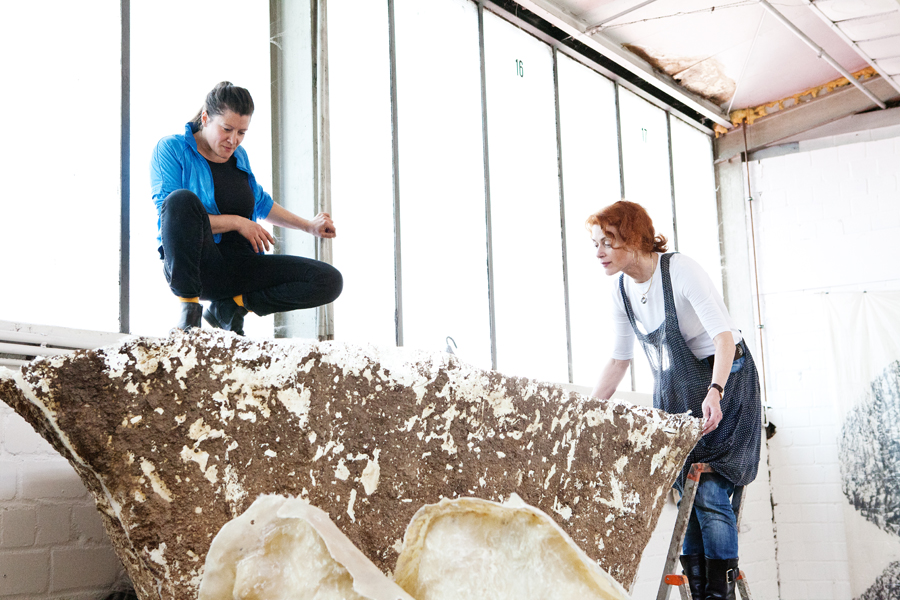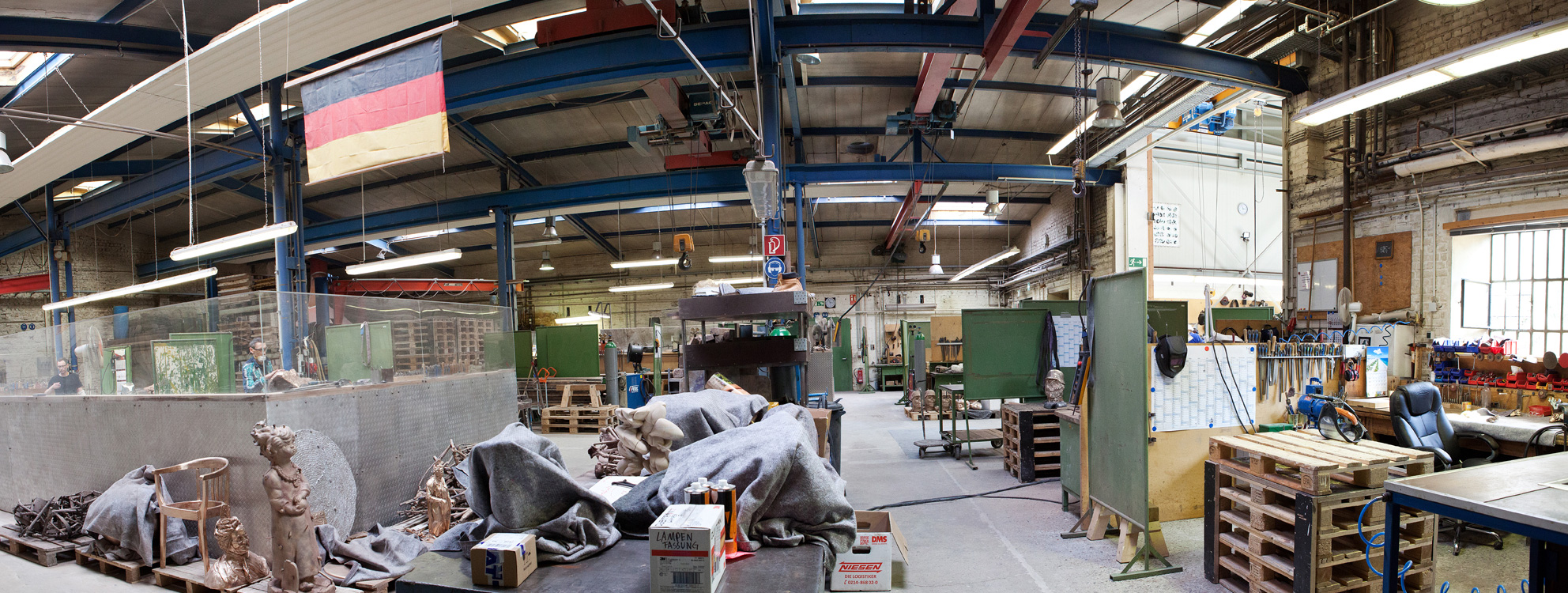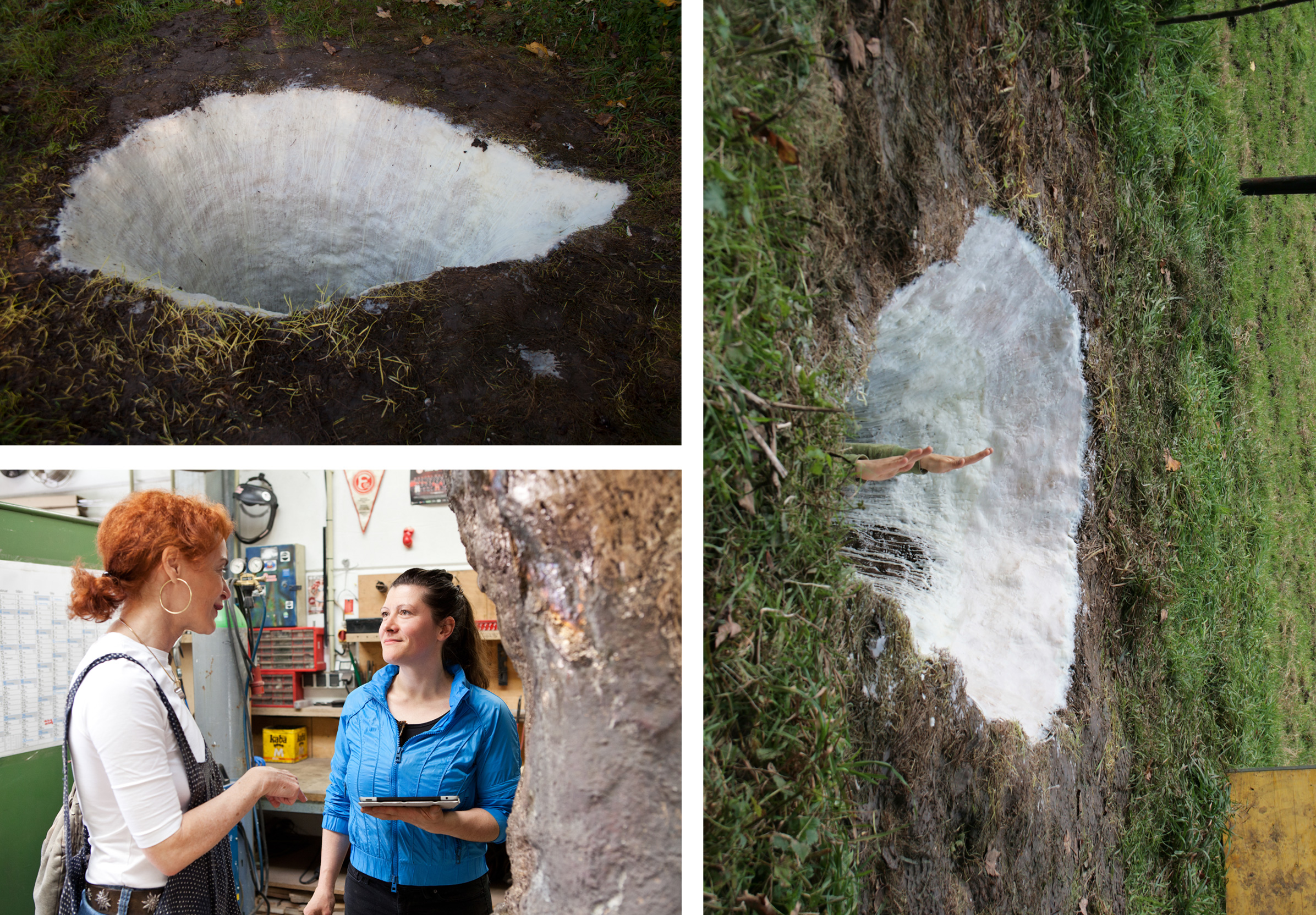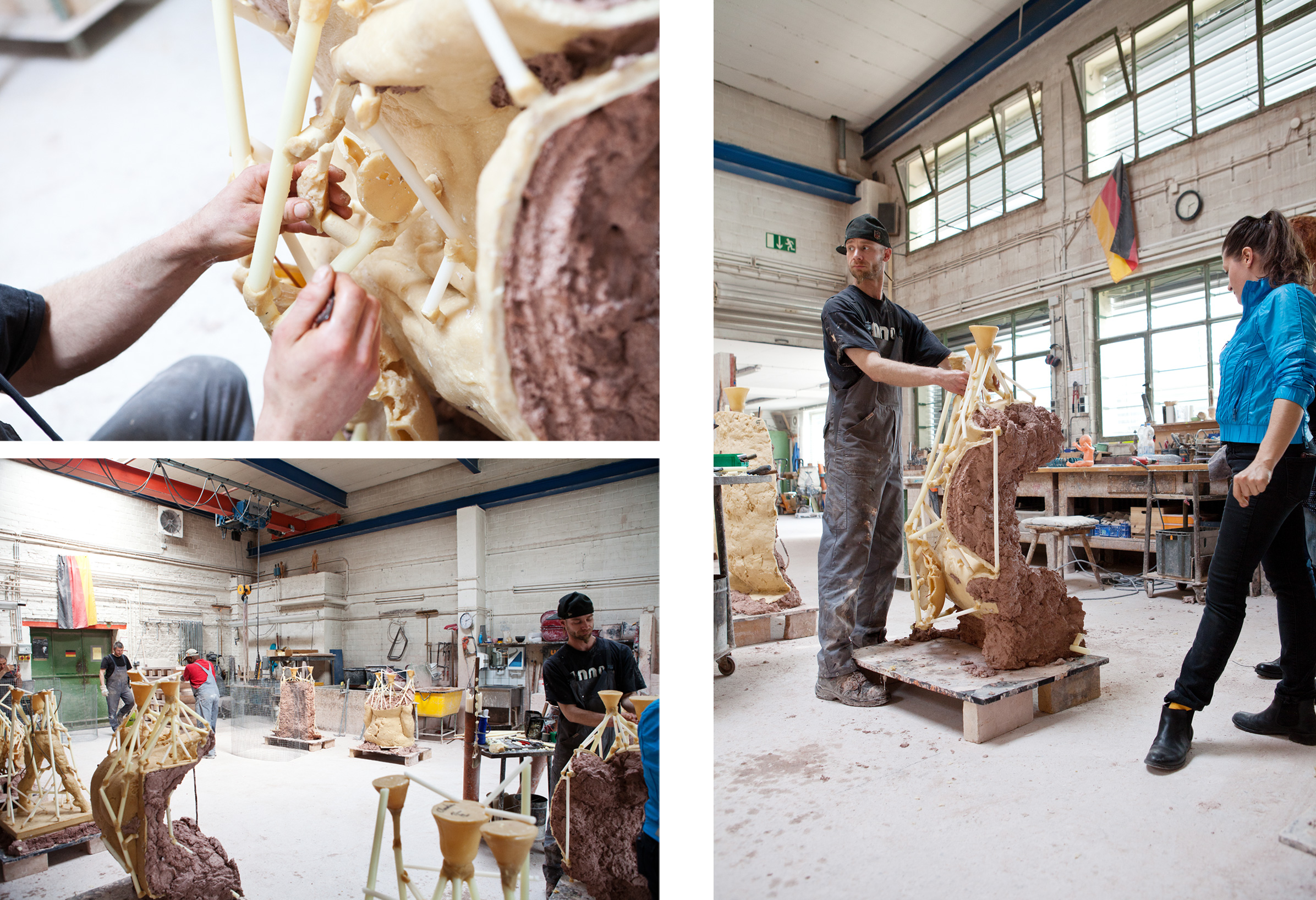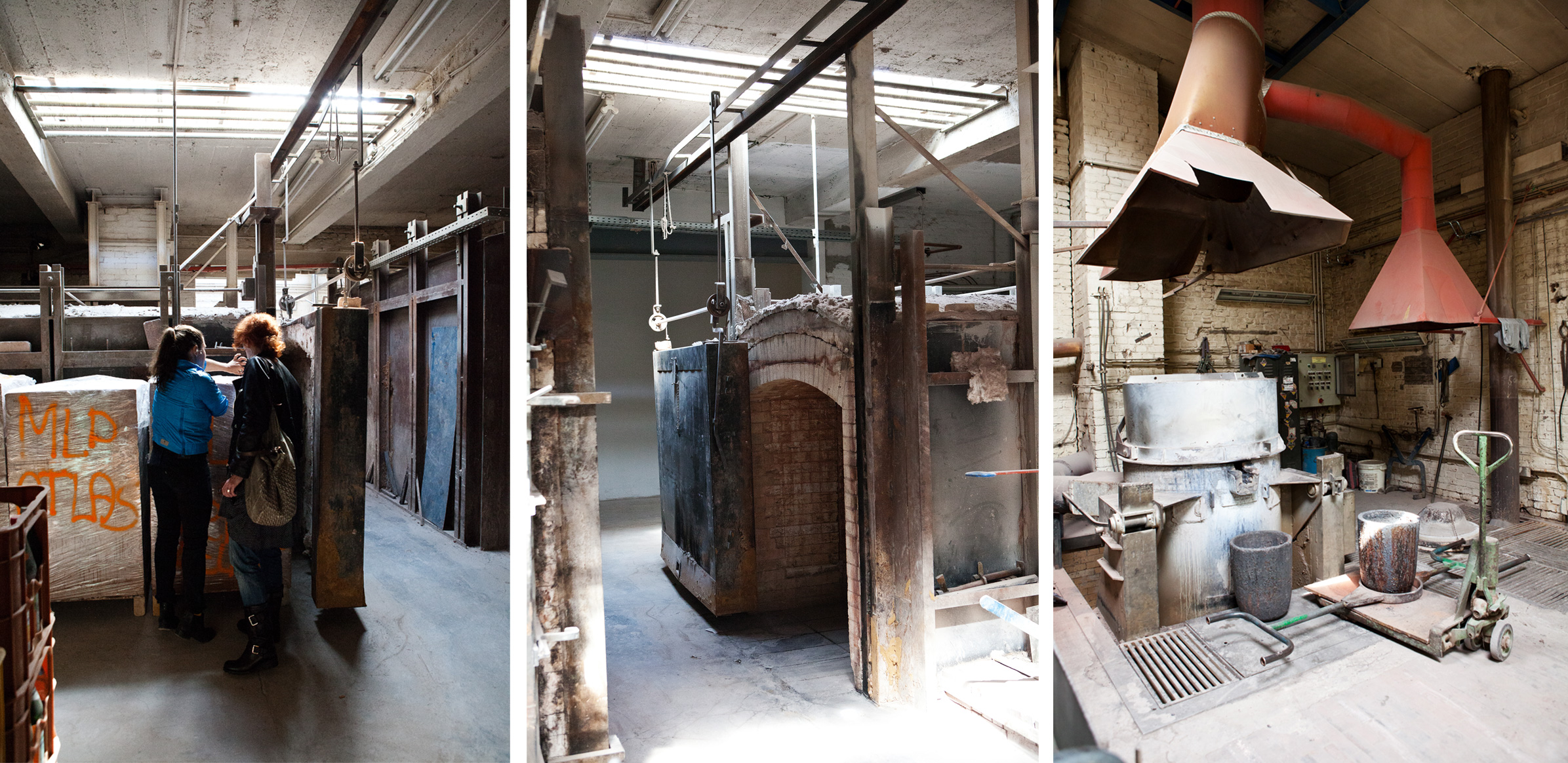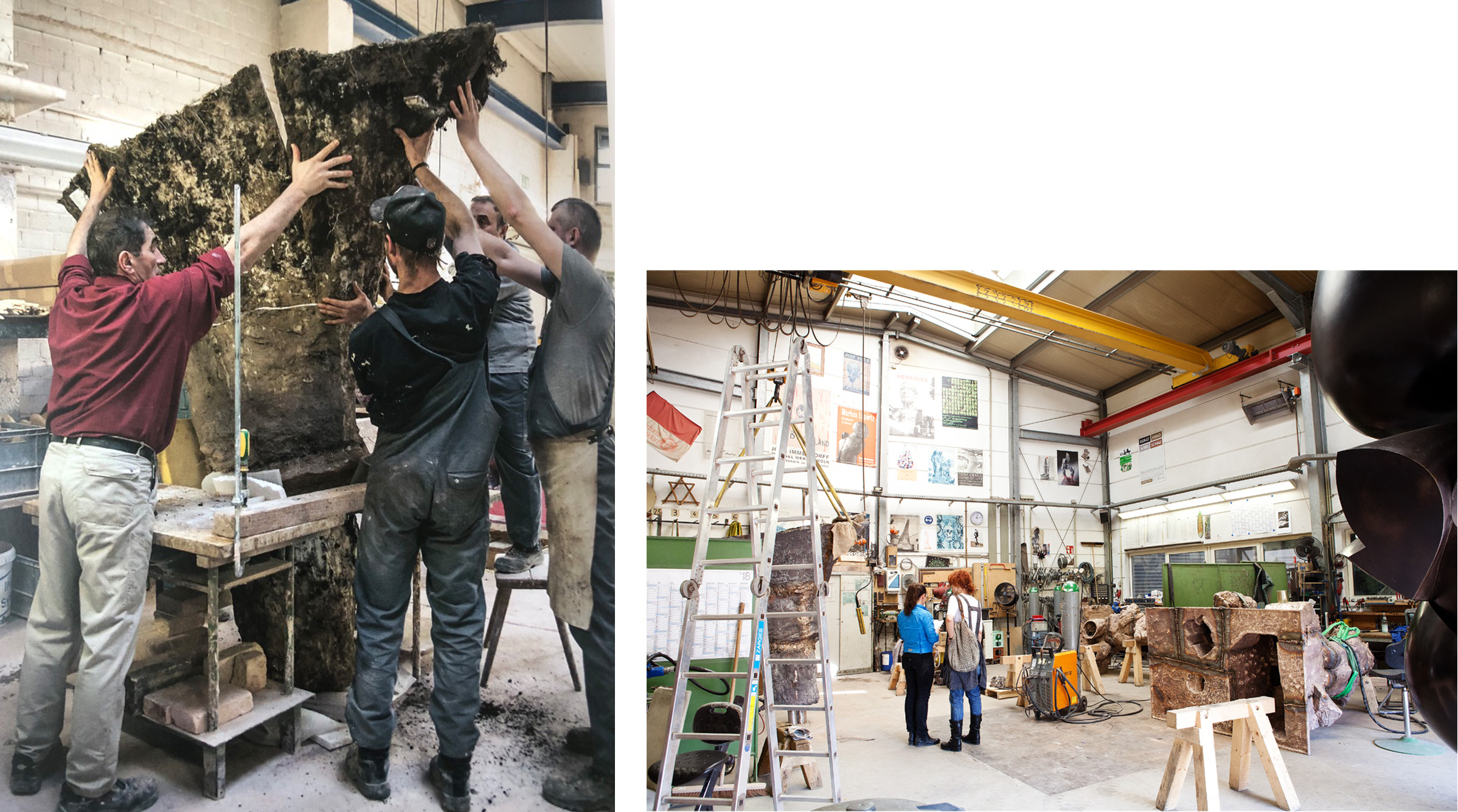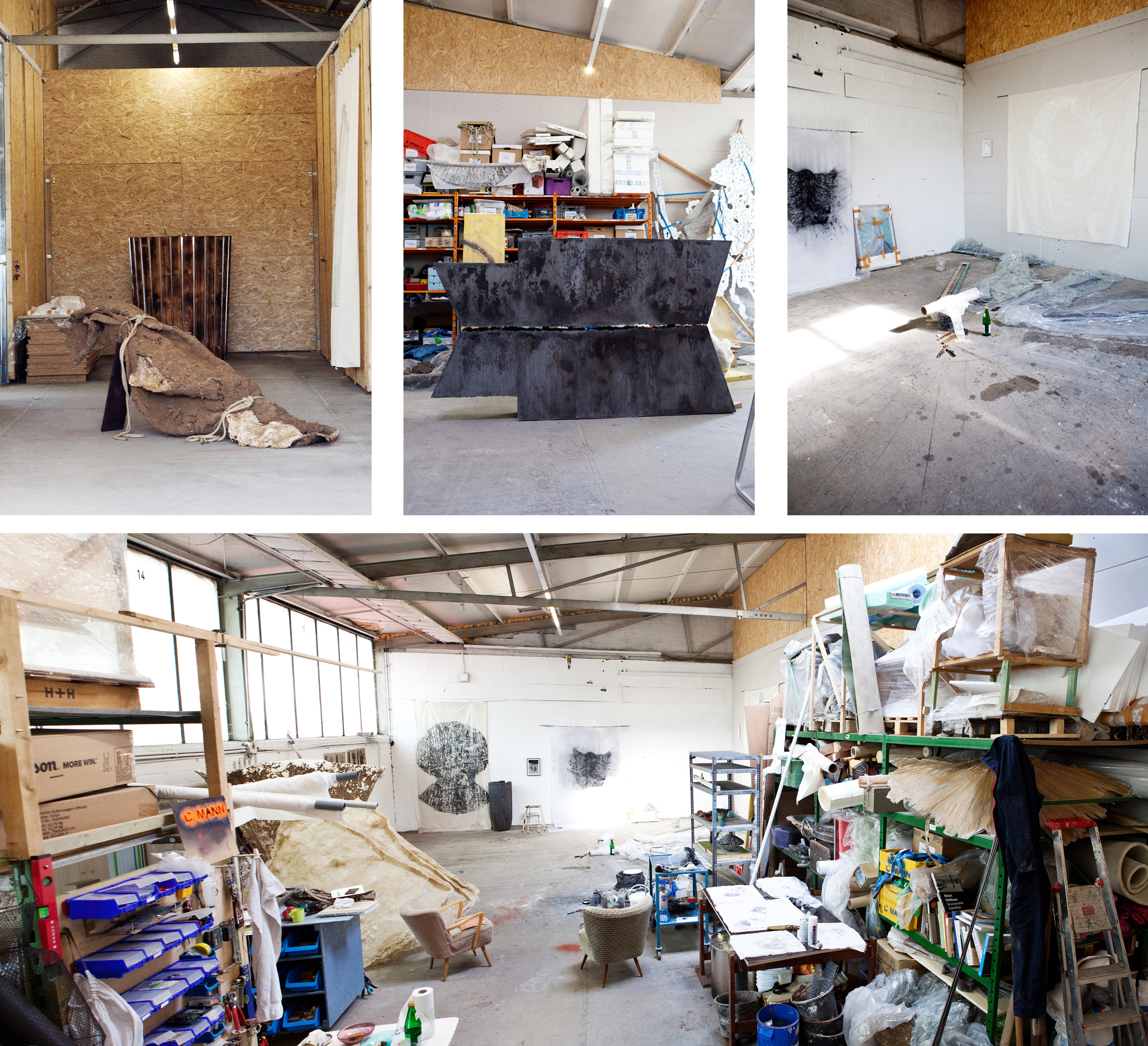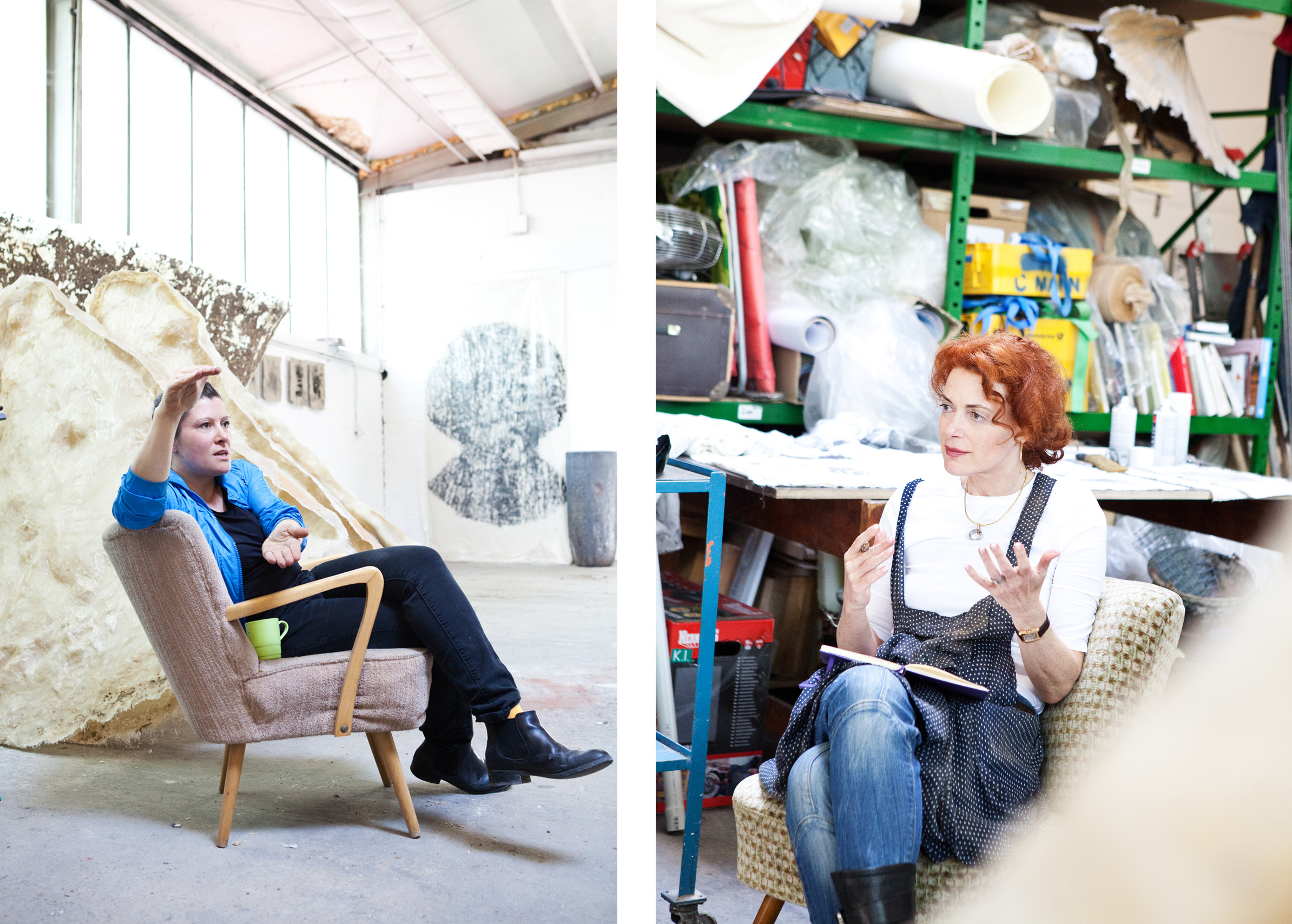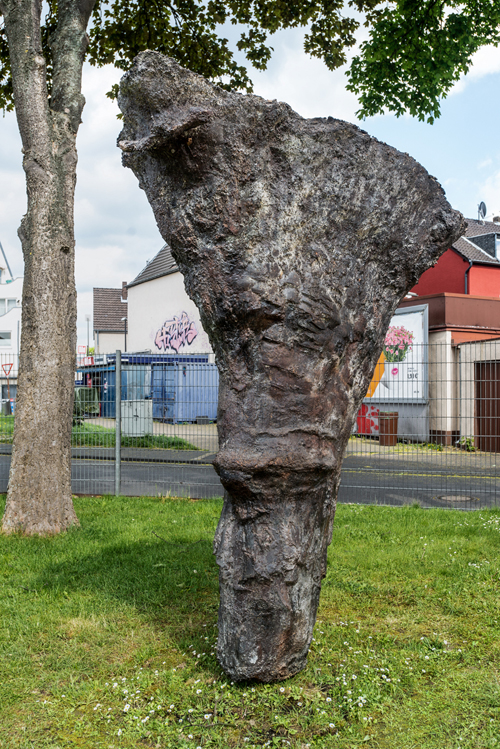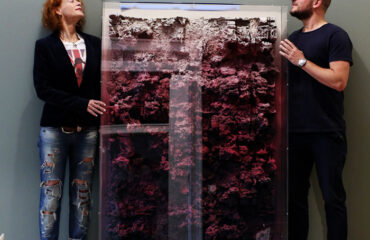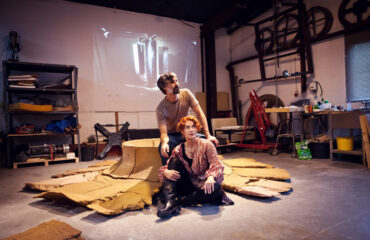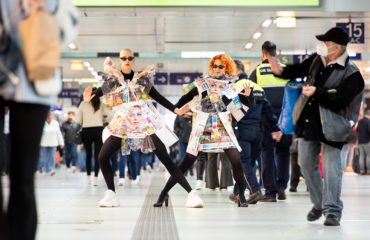The search for the origin of sculpture
Photos: Sarah Schovenberg
Düsseldorf, 17 April 2018, Kunstgießerei Schmäke art foundry. Here I meet Claudia Mann, winner of the Düsseldorf Förderpreis für Bildende Kunst, a sponsorship for up-and-coming artists in the city. Her bronze casting Solid Aero is in its final stages. An unusual place to meet for a studio visit, given that at this stage the work of the artist is, in fact, mostly complete. Not so with Claudia Mann…
I drive to the courtyard and witness the patination of a sculpture by Markus Lüpertz. I observe the process together with Claudia Mann, and am surprised by the speed at which the chemical process makes the bronze change its colour. “I absolutely had to get a look at this. I’m still gathering my options, you see, and want to understand the extent to which it’s possible to leave the pure cast skin”, she tells me, and we are abruptly in the middle of the topic at hand. “In my work, it is of fundamental importance that I make every decision for myself, throughout the entire development process. This also includes the individual work steps within the casting process, so I thought it would make sense to meet here first, before going to my main studio.”
Great idea! I feel as though I might see Rosie and Jim at any moment…
A view into one of the workshops at Kunstgießerei Schmäke
First of all, it has to be explained that in her works, the artist seeks to explore the origin of sculpture, and asks whether the human being is the author of the sculpture, or merely one point of connection. Such a topic threatens to disgorge complex theories – and of course those exist in great number, which Claudia Mann studies intensely – but finds a broad spectrum of practical examination in her works. Solid aero is a prime example of this, as is now being explained to me, and as I will get to see for myself in a moment.
We walk through the individual steps of the ‘lost wax’ process. The first step is to take the positive of the model to be cast, transform it into wax and then – encased in a slurry with liquid fireclay – to heat it. As the wax melts, it leaves behind a cavity into which the bronze can eventually be poured. It sounds complicated, and what I’m seeing now certainly is. Claudia Mann is already making her first decision about how the casting process could be subverted with this conversion into wax. Usually, a 1:1 negative impression of the positive model has to be taken for the wax model to be cast into. “But I don’t want this 1:1 conversion. In order to capture every step of this process in the most literal sense, I do not shape the model. I shape the impression.” She shows me a desert rose, which forms the positive here, and places her impressions next to it for comparison. The changes are clearly visible.
Picture 1: Desert rose in original (positive) _ Picture 2: Impression of the original (negative). The wax positive is later produced in this cavity, which the casting mould is ultimately formed around.
However, with Solid Aero the wax impression is the original, and therefore is the positive form. To create this sculpture, she dug a hole in the ground which corresponds to her body size – “limited to the smallest, but deepest space I needed. I took a wax impression of the hole I’d modelled. It was important to me that traces of the layer of earth, such as sand, grass or stones, were captured in the wax and remained as visible inclusions even in the casting.” She’s showing photos. Unbelievable. What a feat! She can do a lot with her body, she tells me with a laugh, reacting to my incredulous look. “The next decision point was where to make the breaks in the wax so it could be transported to the foundry.”
Picture 1: The wax-moulded hole _ Picture 2: Claudia Mann next to the bronze casting made from this wax mould, Solid Aero _ Picture 3: Claudia Mann, standing with arms outstretched in her modelled and wax-moulded hole
Until to now, I have understood: This is not a classical work of sculpture originating in the studio, but rather, one which originates in nature. Instead of a free sculpt, nature itself was modelled and cast, using bodily dimensions as a frame of reference. As a consequence, this wax positive is not based on a model. The unique pieces are themselves melted down and can therefore never be reproduced. This is a challenge for those in the foundry who have to build the framework for the inlets which will later channel the liquid bronze. Claudia Mann does admittedly relinquish this task to them but supervises it herself.
Picture 1: Desert rose in original (positive) _ Picture 2: Impression of the original (negative). The wax positive is later produced in this cavity, which the casting mould is ultimately formed around.
Every employee of the foundry knows the artist and holds her in high regard, which is plain to see in the way they interact with one another. That’s why we get to access all areas. We take a look at the furnaces and then at the area where the cast bronzes are chased.
The furnace area in Kunstgießerei Schmäke
Another bit of fiddly business. Here the inlets are removed, separate elements are welded together, welds are removed and, finally, the surface is treated according to the artist’s specifications. Here too, the artist – size and weight, somehow, permitting – gets her hands dirty again. The dimensions of Solid Aero will have required help, but she chased the weld herself, just like the colouration which she is still trying to figure out in meticulous fashion. I stand in amazement before this gigantic, archaic-looking form. You can tell that this sculpture is connected to nature just at a glance, from its shape, surface and colour. We now approach the question of how this work gets to the bottom of the origin of sculpture.
“My search for the origin begins with questions about the definition of sculpture. What constitutes sculpture, exactly, or what is connected to its existence? Answers can be found above all through the examination of space, matter, air, light, soil and gravity. I became more and more aware of the complexity and dimensions of the mutual dependencies and influences: that sculpture takes up space and at the same time displaces it, that light makes it visible to us, that soil and gravity hold it up, that gravity in turn is dependent on the atmosphere. My examination of the ground gained more and more importance from my continued search for answers to the question of where or what the beginning is. I had always begun my work kneeling on the ground and then, in turn, built a form upwards. At some point I increasingly began questioning the ground in a philosophical and physical sense, until for me it became not just the starting point, but sculpture itself. This insight impelled me and made it necessary to break through the ground in order to perceive it as sculpture”.
“Which brings you, as the author of the sculpture, into the picture. How did the measurements of your body with your arms outstretched determine the shape? Was the famous Vitruvian Man – the human being as a triangle in a circle – a precursor (Inspiration?)?” “For me, triangle and circle symbolise the logical archetypes. On the one hand, the triangle represents the simplest form of stability; on the other, a form is traced which comes from the cross-section from the centre of the earth to its surface – the ground. The circle symbolises the circumference of the earth; the human being encompassed in a circle symbolises movement around their own axis. The dimensions of my body were important inasmuch as I successively connected myself to the Earth and took possession of it at an emotional level over the process of digging to those measurements. I no longer have a role in the Solid Aero sculpture. I was nothing more than a measuring tool, a human point of reference.”
We change location and drive to to her main studio in Korschenbroich. There are other large-format sculptures on display here, as well as photographic works, frottages and documentations of performances. An impression of the ground of her studio is currently in progress. So, the ground again, but this time just the ground floor.
A view into the studio – the impression of the ground can be seen at the picture top right
“What’s it all about?” “I haven’t been in this studio that long. Ultimately, it was crucial for me to turn the space into something I could get to grips with as part of taking this impression and to find a way in, emotionally. During this process, it became clear to me in a very poetic way that this impression isn’t dateable. This ground came into being over an indefinite time before me, and will survive my existence for an indefinite time.”
Which is applicable not just to all her works, which were created with the involvement of biological processes, but also to human existence as such, I’m now thinking to myself. Is the human being nothing more than a point of reference, then, or the author of a sculpture? The fact is, Claudia Mann’s works show, impressively, that the question of the origin of sculpture can possibly only be answered in relation to human existence. Taking the example of Solid Aero, it became clear that the mass and volume of the earth excavated was in absolute relation to the artist and these were therefore of decisive importance for the size and shape of this sculpture. But her assertion that for her, the performative act – the constant connection to the Earth – is in the foreground and that she therefore acts as nothing more than a measuring tool or, in the case of the floor impression, a time parameter, that makes her authorship fade into the background. “The longer I work on it, the smaller I get,” she says describing the process.
The attempt to find answers to questions about the origin of sculpture is suddenly set in relation to questions about one’s own location in space and time. Our own location within the space surrounding us, within matter, air, light, upon the ground. The components which were just shown in the context of sculpture plainly point towards the foundations of human existence… Perhaps the origin of sculpture, then, is to be found within these interactions?
Solid Aero, ausgestellt in der Fuhrwerkswaage in Köln
Weitere Informationen
… about the artist: http://claudiamann.net
… about currently available editions: http://www.einsvonelf.de/artists/claudia-mann/
